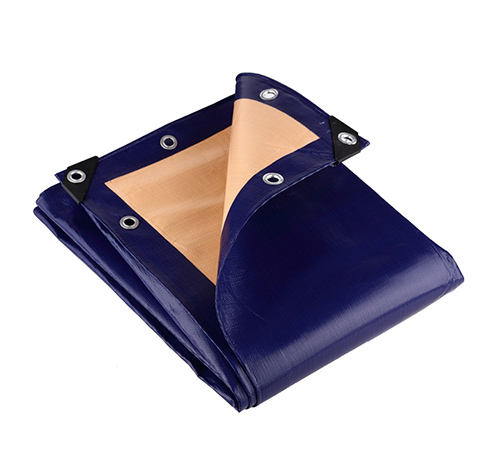Understanding the Basics of Tarpaulin
2024-07-05
A tarpaulin, commonly known as a tarp, is a large sheet of strong, flexible, water-resistant, or waterproof material. Here are the basics:

Materials
- Polyethylene (PE): The most common type of tarpaulin, often referred to as "poly tarps." They are made from woven strips of polyethylene plastic and then coated for added durability.
- Canvas: Made from heavy-duty cotton, canvas tarps are breathable and suitable for covering items that need to avoid condensation.
- Vinyl: Made from polyvinyl chloride (PVC), vinyl tarps are heavier, more durable, and often used for industrial purposes.
Features
- Water Resistance: Tarps are designed to repel water, with varying degrees of waterproofing based on the material and coating.
- UV Protection: Many tarps are treated to resist ultraviolet (UV) light, which prevents degradation from sun exposure.
- Grommets: Reinforced holes along the edges of the tarp, typically made of metal or plastic, allow for easy attachment and securing.
- Reinforced Edges: The edges of tarps are often double-stitched or heat-sealed to prevent fraying and tearing.
Uses
- Construction: Covering building materials and scaffolding to protect against weather.
- Camping: Used as ground covers, shelters, or for protecting gear.
- Transportation: Covering loads on trucks and trailers to secure and protect the cargo.
- Agriculture: Protecting crops, hay, and equipment from the elements.
- Emergency Shelter: Providing temporary shelter in disaster relief situations.
Types
- Blue Poly Tarps: The most common and inexpensive, suitable for general use.
- Heavy-Duty Tarps: Thicker and more durable, often with additional UV protection and higher tear resistance.
- Mesh Tarps: Allow some air and light to pass through, ideal for shade and covering areas where ventilation is needed.
- Flame Retardant Tarps: Treated to resist ignition and comply with fire safety regulations.
Maintenance and Care
- Cleaning: Regularly clean tarps to prevent mold and mildew. Use mild soap and water, avoiding harsh chemicals that can damage the material.
- Storage: Store tarps in a cool, dry place away from direct sunlight to extend their lifespan. Fold them neatly to avoid creases and tears.
- Inspection: Periodically inspect for any signs of wear and tear, such as holes or frayed edges, and repair as necessary.
Understanding these basics will help you select the right tarpaulin for your needs and ensure its proper use and maintenance.


